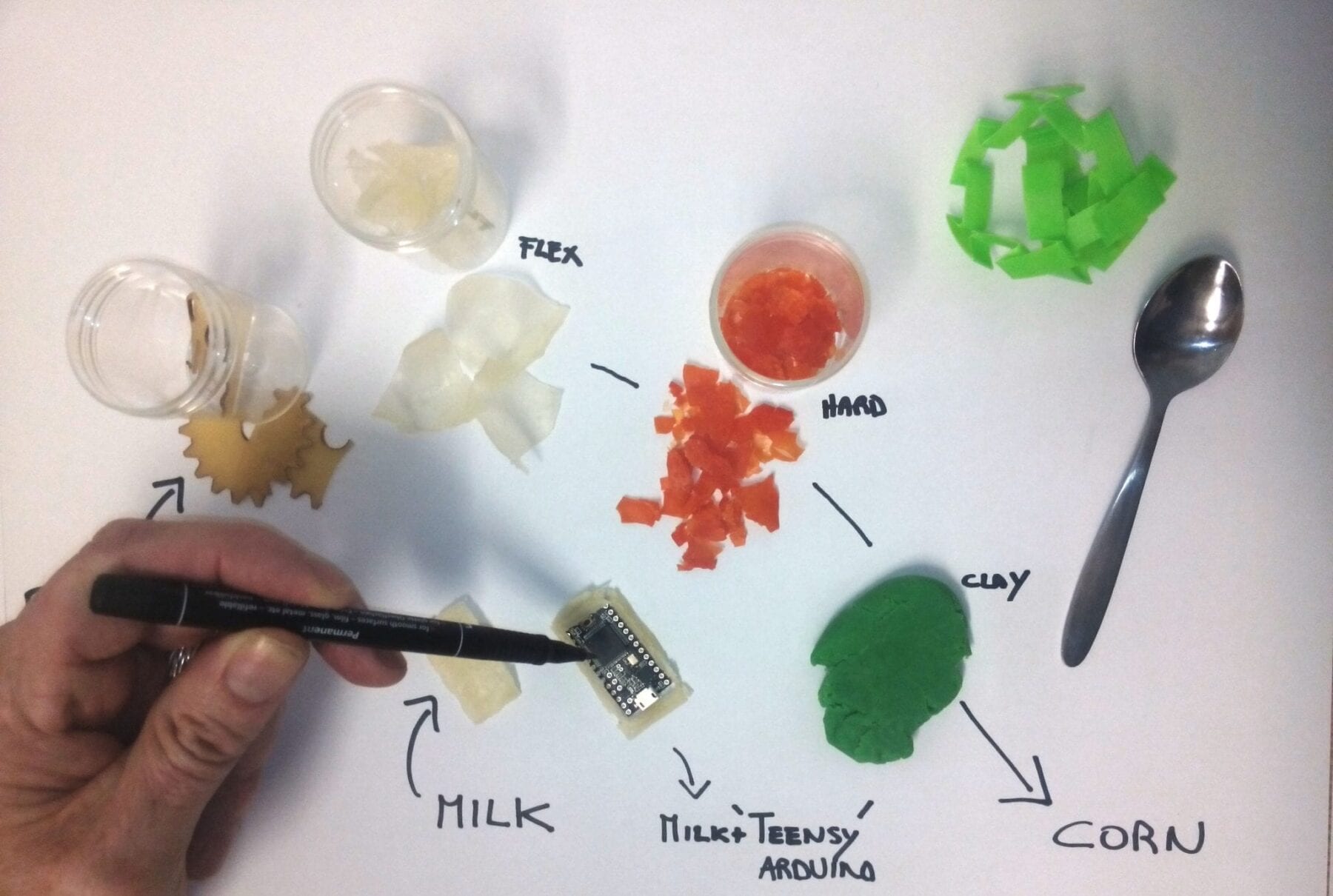
For spintronics applications at room temperature
Physicists of Utrecht University and their French colleagues have theoretically designed the ‘holy grail’ of material science. This material should exhibit a unique combination of the exceptional electronic properties of graphene with the important properties that graphene misses at room temperature. “If we manage to synthesize this ‘holy grail’ and it exhibits the theoretically predicted properties, a new field of research and applications opens up we can’t phathom yet”, states Prof. Cristiane Morais Smith from Utrecht University. Their findings are published in Nature Communications on 10 March 2015.
Graphene is a form of carbon in which the atoms are connected in a honeycomb structure. The possible ‘holy grail’ has this same structure, but is made of nanocrystals of mercury and tellurium. In their paper, the theoretical physicists show that this material combines the properties of graphene with the qualities graphene misses. At room temperature, it is a semiconductor instead of a conductor, so that it can be used as a field-effect transistor. And it fulfils the conditions required to realise quantum spintronics, because it may host the quantum spin Hall effect at room temperature.
Quantum spin Hall effect and a honeycomb structure
Graphene, which was produced for the first time in 2003, is the first material discovered in which electrons move as if they have no mass. This is caused by the honeycomb structure of the Carbon atoms, which induces the electrons to behave as relativistic particles. However, it cannot realise the exotic quantum spin Hall effect, not even at very low temperatures. In their search for the holy grail, the challenge for the theoretical physicists was to find a way to shape a material that could have the potential to realise the quantum spin Hall effect at room temperature in a honeycomb structure.
Mercury tellurate
The quantum spin Hall effect, which was predicted in 1971, was only realised experimentally in 2006 by Prof. Laurens Molenkamp of the University of Würzburg and his team. They used mercury telluride/cadmium telluride quantum wells at a very low temperature. This inspired the theoretical physicists to design several honeycomb structures of mercury telluride nanocrystals and calculate their properties. Several structures turned out to have all the properties of the holy grail they were looking for. At Utrecht University, Prof. Daniël Vanmaekelbergh has already managed to synthesize this kind of honeycomb structures by using cadmium-selenide nanocrystals.
Realizing the holy grail
“However, at the moment Prof. Laurens Molenkamp is the only expert in the world working with mercury telluride. So we are happy that he is very interested in synthesizing the honeycomb structures we designed with mercury telluride”, says Prof. Cristiane Morais Smith from Utrecht University. “Although it is not yet possible to realise it experimentally, he expects that the technology necessary will be available within a short time, given the developments that are going on in his lab right now. If we succeed in synthesizing it and the material indeed exhibits the unique combination of exotic properties at room temperature as we predicted, a field of fundamental research and technological innovations opens up that lies beyond our imagination.”
Read more: Theoretical physicists design ‘holy grail’ of materials science
The Latest on: Spintronics
[google_news title=”” keyword=”Spintronics” num_posts=”10″ blurb_length=”0″ show_thumb=”left”]
via Google News
The Latest on: Spintronics
- A Paradigm Shift in RAM Is About to Make Computing Unstoppableon April 24, 2024 at 5:30 am
For more than two decades, the most advanced version of this technology—magnetoresistive RAM, or MRAM—has been the go-to tech for the kind of intense computing necessary in industrial, military, and ...
- Here’s Everything You Need To Know About Spintronicson April 23, 2024 at 5:00 pm
Spintronics, also known as spin electronics, is a rapidly developing field that explores the potential of utilising the spin of electrons in solid-state devices. Spin is one of the three ...
- Unlocking spin current secrets: A new milestone in spintronicson April 23, 2024 at 2:55 pm
Using neutron scattering and voltage measurements, a group of researchers have discovered that a material's magnetic properties can predict spin current changes with temperature. The finding is a ...
- Spintronics research shows material's magnetic properties can predict how a spin current changes with temperatureon April 23, 2024 at 10:11 am
Spintronics is a field garnering immense attention for its range of potential advantages for conventional electronics. These include reducing power consumption, high-speed operation, non-volatility, ...
- A new spin on materials analysis: Benefits of probing electron spin states at much higher resolution and efficiencyon April 17, 2024 at 12:45 pm
Electron spin states can now be probed at much higher resolution and more efficiently, opening new opportunities in materials analysis and data processing technologies.
- Spintronics: A new path to room temperature swirling spin textureson April 17, 2024 at 10:22 am
Examples of such structures are magnetic bubbles, skyrmions, and magnetic vortices. Spintronics aims to make use of such tiny magnetic structures to store data or perform logic operations with very ...
- Researchers develop energy-efficient probabilistic computer by combining CMOS with stochastic nanomagneton April 17, 2024 at 6:25 am
Researchers at Tohoku University and the University of California, Santa Barbara, have unveiled a probabilistic computer prototype. Manufacturable with a near-future technology, the prototype combines ...
- Spintronics: A new path to room temperature swirling spin textureson April 16, 2024 at 5:01 pm
Examples of such structures are magnetic bubbles, skyrmions, and magnetic vortices. Spintronics aims to make use of such tiny magnetic structures to store data or perform logic operations with ...
- Transporting spin information at the speed of lighton April 2, 2024 at 4:59 pm
The breakthrough, described in a study published March 27 in Nature, involves the field of spintronics, which aims to manipulate the spin of electrons in order to store and process information. The ...
- Spintronics articles from across Nature Portfolioon April 2, 2024 at 4:59 pm
Spintronics is the use of a fundamental property of particles known as spin for information processing. In many ways, spintronics is analogous to electronics, which instead uses the electrical ...
via Bing News










